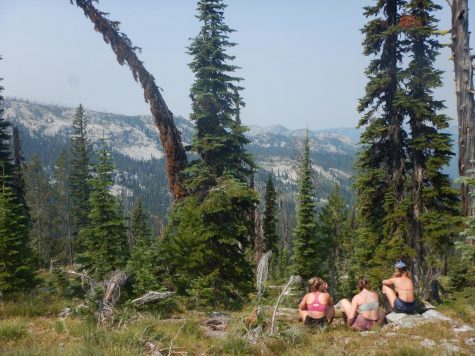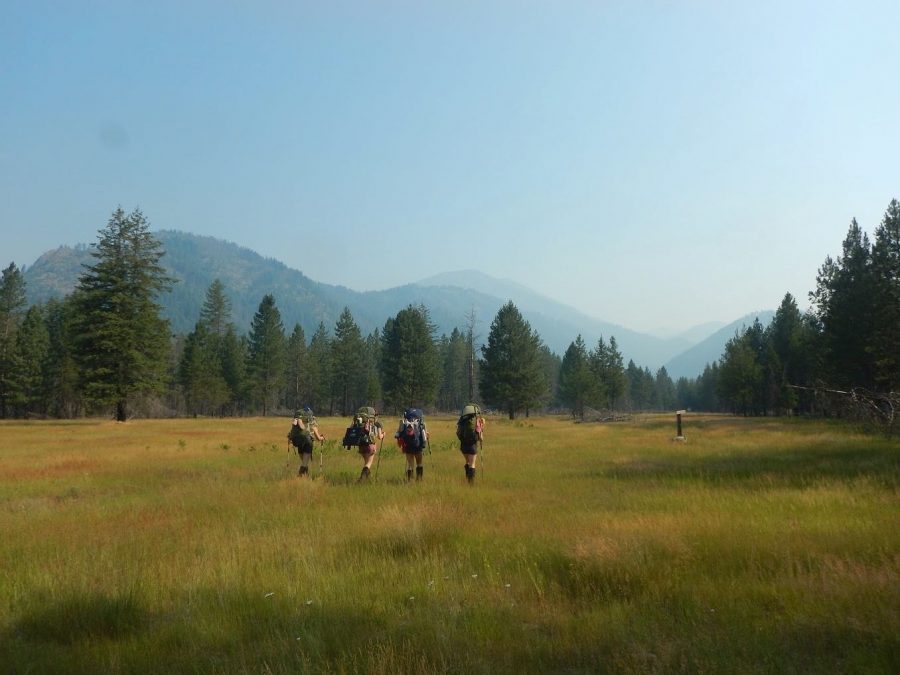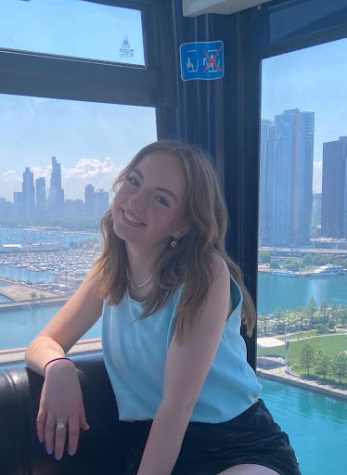The Trip of a Lifetime: Lessons I Learned Out West
How my 26-day backpacking trip this summer contributed to my personal growth
26 days hiking in Idaho’s Selway-Bitteroot Wilderness changed me for the better.
September 3, 2021
110-degree heat, new blisters every day, and blazing wildfires four miles from our campsite, and yet, I’d do it all again in a heartbeat.
This past summer, I had the privilege to continue my journey at Camp Manitowish YMCA and went on a 90 mile, 26-day backpacking trip in northern Idaho.
It is difficult to reflect on an experience that had such an impact on me, especially one that inspired a such roller coaster of emotions before, during, and after it. I can’t even wrap my head around how I feel about it. I had such an incredible experience in Idaho, and I don’t even know where to begin.
So, I’ll start from the very beginning.
I have been going to Camp Manitowish since the summer before 5th grade. I grew up hearing about the infamous “Western,” or the month-long backpacking trip out west that many staff members relay as their favorite wilderness trip that they have ever been on.
I was supposed to do this trip in the summer of 2020, but it was one of the many things that fell victim to COVID-19. Luckily, it was rescheduled for this summer.
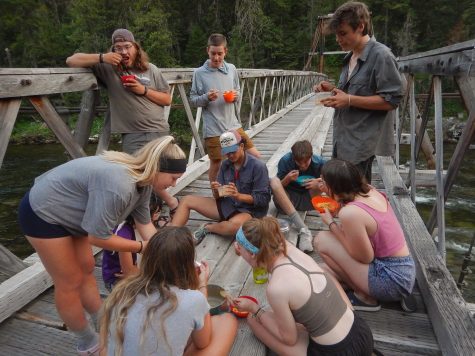
My group consisted of five participants and one leader. In total, there were 6 Western groups. Each group had four to five participants, and everyone was jam-packed onto a coach bus for 30 hours as we drove across the country.
This might raise the question of how I slept, and in reality, I didn’t. Some people have the superpower to fall asleep anywhere, including my tripmate Nora, but I am not blessed with that ability. Additionally, everyone was antsy, ready to start their trip of a lifetime.
And, it was in fact, a trip of a lifetime.
My time in Idaho taught me about myself and allowed me to grow in countless ways. I have taken away notable lessons that I hope to apply to my everyday life and believe others would benefit from as well:
Appreciation for nature:
For a year and a half, I was locked inside like most of the rest of the world. I got used to my bedroom walls and air conditioning and being blocked from the sun.
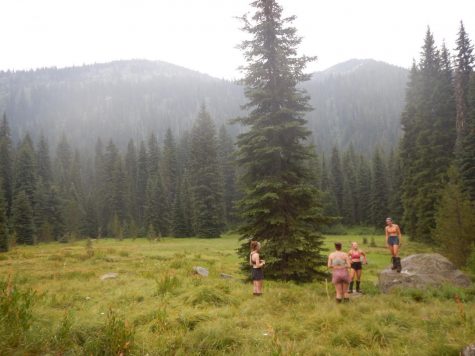 I missed the outdoors, but I got into a cycle where I was comfortable inside. Despite the previous summers I have spent in the North Woods, and as disappointed as I was when the original trip was canceled, I almost forgot what I was missing. I almost forgot how much I loved the raw beauty of trees and lakes, how I breathed in fresh air.
I missed the outdoors, but I got into a cycle where I was comfortable inside. Despite the previous summers I have spent in the North Woods, and as disappointed as I was when the original trip was canceled, I almost forgot what I was missing. I almost forgot how much I loved the raw beauty of trees and lakes, how I breathed in fresh air.
But, this summer back in the wilderness, walking on land previously untouched by humans, I felt more alive than I had in a while.
One thing that I loved about Idaho was the many different types of terrain we encountered. At the beginning of the day, we could be walking through old-growth cedar forests, and by the end of the day, we would be walking on exposed granite.
It was invigorating to be immersed in the raw beauty of the mountains. I became more in-tune with myself away from the distraction of phones and social media.
It was essential for me to be reminded of the world that we live in, and that our lives can be so much more than the walls of our houses and the images on our screens.
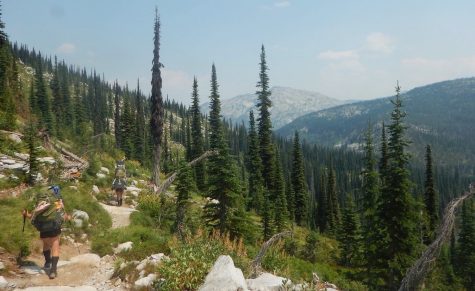
Benefits of being vulnerable:
For me, the most difficult part of the trip was when I was struggling and felt like no one else was.
I tend to be closed off about my true feelings, often unwilling to share what I am struggling with. So, when I am having a hard time–not only during this trip, but in my everyday life–it is challenging for me to speak up and express what I need help with.
On day 17, we began hiking, and immediately I was struggling a lot physically and mentally. My legs felt heavy, my hips aching, my head just not in a good place. I hiked in silence, unable to muster a word that would be positive; I didn’t want to complain or hold the group back.
It wasn’t until I began to open up about how I was feeling that I learned that every other person in the group was feeling unusually exhausted as well. We were all equally confused about the amount of pain we were feeling.
As much as I don’t wish for my friends to be struggling, I instantly felt less alone. We bonded over our collective “off day,” and instead of wallowing during our rest, we took a two and a half-hour lunch, told stories, and laughed until we cried. My mood was completely transformed.
I learned how important it is to be vulnerable and open up about struggles, especially in a place where I feel safe. It can open the door to form closer relationships with the people around. Maybe someone will feel the same way, who knows?
Forming intentional relationships:
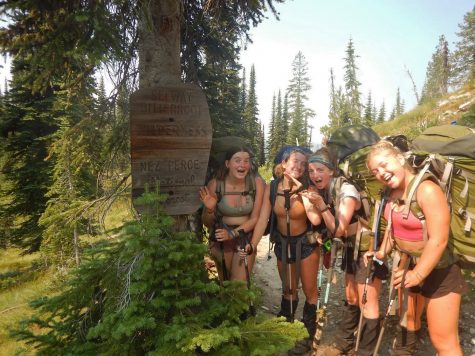
My biggest tangible take-away from camp over the years is the friends I have made there.
These wilderness trips, especially ones this length, force you to bond fast; it’s hard not to when they are the only people you spend time with for a month.
Camp has always been an accepting place and somewhere where I have never been afraid to be myself. It’s almost a whole other world up north. Everyone is so free and authentic.
It was refreshing to be exposed to people from all over the country and connect with them on a deeper level.
My time at Manitowish has taught me the importance of having an open mind while meeting new people and being genuine from the beginning. The vulnerability that this trip brought me allowed me to explore these relationships even further, making them that much more meaningful.
Adaptability:
It’s inevitable that trips as long as these will come with hardships. However, it would’ve been difficult to anticipate the struggles that our group went through. 
Record-breaking heat waves struck where I was hiking, and unseasonably frequent and intense wildfires (including one that started 4 miles from where we were) created a haze that limited our visibility and left ash on our tent in the morning.
On day 5, one of our group members was sprayed directly in the eyes with bear spray from less than a foot away. Yes, bear spray as in pepper spray on steroids, effective towards a grizzly bear from 40 feet away. She couldn’t see for 45 minutes.
Luckily, we were near a lake, so she was able to submerge herself fully in the water in an effort to rinse and cool her burning skin.
Despite these intense issues, the most glaring obstacle that our group faced was one of our members getting evacuated almost halfway through the trip.
Just a few minutes into our hike on day 10, while walking along a steep, rocky ledge, my friend fell and broke her arm.
We were 15 miles from the nearest spot where she could get evacuated, and she was unable to carry the full weight of her pack. We redistributed the gear she usually carried, each of us taking on many more pounds, and as a group, we proceeded to hike for the next two days.
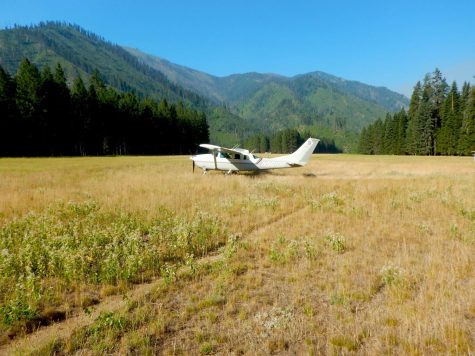 On day 12, she was flown out from Moose Creek airstrip on a bush plane and did not come back to the trip.
On day 12, she was flown out from Moose Creek airstrip on a bush plane and did not come back to the trip.
These unprecedented challenges tested my ability to adapt and make smart, safe decisions.
We dealt with the heat by waking up early in the morning to get miles in before it got to the hottest part of the day. We rerouted certain parts of the trip and lowered our mileage due to the heat that made our original route implausible. We monitored fires and did more mileage on days where they got a little too close for comfort.
We took an extra rest day when Margaret was recovering from the bear spray.
After one of our members got evacuated, it proved to be more difficult for us remaining members to recover than I would have expected. By day 10, we had all taken on certain roles in the group. Our entire group dynamic changed entirely, and we had to find a way to make up for her absence.
It’s difficult because I know most people are interested in what went wrong–the major “lows.”
And while yes, these stories are interesting to tell, I don’t want my trip to be defined by a couple of negative experiences. In reality, my trip was so much more.
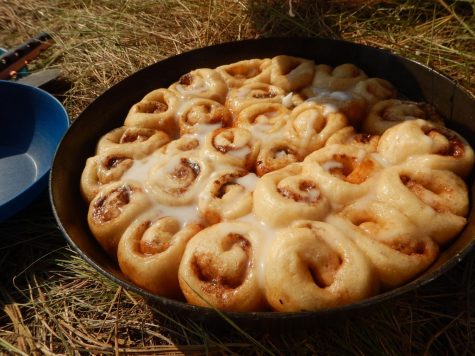
My trip was making our own food from scratch every day, the highs of reaching the top of a pass, lying beneath a sky that seemed so vast, speckled the brightest stars I have ever seen, and the tears of laughter rolling down my face at 2:47 AM with people that I have felt like I have known for a lifetime.
Forming intentional relationships, spending time outdoors, and stepping out of my comfort zone by being vulnerable are all things that I see as positive and worthwhile.
And you don’t need to complete a month-long backpacking trip to benefit from these lessons. “Stepping out of your comfort zone” could mean a multitude of things.
It looks different for every individual, but from now on, I will encourage everyone to find something that challenges them, that forces them to adapt, and is something that they love.
I found that the best experiences can come when least expected–whether it was the 30-hour bus ride or steep pass in the heat, stepping out of my comfort zone allowed me to learn and grow in ways I would never have imagined.
